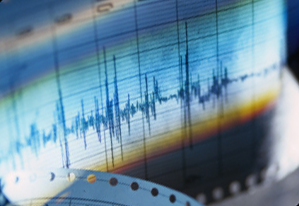
The earthquake came first, but it was not like all of the other earthquakes they had known. The ground shook so violently, for so long that afternoon on March 11, 2011, the earth liquefying in many places. The destruction of the magnitude 9.0 earthquake was unimaginable, but the wall of water was next. The tidal surge of the tsunami was as high as a two or three story building, smashing buildings and structures like tinker toys. In addition to dealing a near crippling blow to Japan's communications system, and destroying homes in its path, the catastrophe left more than 11,000 dead or missing. The Great Eastern Japan Earthquake disaster reminds us of what America faced during and following Hurricane Katrina that struck the Gulf coast in 2005. That disaster is still with us, even after the rescue of many victims and the restoration of some of the buildings and infrastructure. Even so, it is difficult for us to imagine the enormity of the sense of loss, fear and desperation our neighbors in Japan must be facing during this difficult time.
The disaster in Japan is a reminder: we can never be too vigilant in preparing for the next catastrophic event. Yesterday’s Forum on Earthquake Communications Preparedness is part of the FCC’s vigilance. Panel participants highlighted several ways to improve communications during disasters:
- Promote the flow of information by integrating social media such as Twitter and Facebook into traditional public safety communications media.
- Promote procedures to standardize access to an afflicted disaster area to enable first responders and other critical public safety operatives to offer assistance unimpeded.
- Promote emergency preparedness and awareness by fostering public-private partnerships with critical industry and outreach to communities.
- Promote an Emergency Alert System (EAS) or Integrated Public Alert and Warning System (IPAWS) that is all-of-nation, multi-modal, and based on an open-architecture, that is accessible by anyone at anytime through a Web-based portal using CAP and or KML (a file format used to display geographic data in an Earth browser such as Google Earth, Google Maps, and Google Maps for mobile)
We are proud of our distinguished guests from the Embassy of Japan, FEMA, industry and academia. I hope that this forum will add a new perspective to the Commission’s ongoing dialogue with the public on how we can improve upon our nation’s emergency response and disaster preparedness capabilities.
We will never forget the horror of the 9.0 earthquake and wall of water, and we will not forget either the victims or the survivors of the Great Eastern Japan Earthquake. I have every confidence that Japan will draw strength from its people, its leaders, and its rich history as it begins to restore itself.
Finally, I am pleased to note that an internal ad hoc working group comprised of FCC subject matter experts has been working closely with our Japanese counterparts from the Embassy of Japan, the Ministry of Information and Communications, and industry. The purpose of this working group is to better understand the disaster, share lessons learned from our own experiences following Hurricane Katrina, and to offer other assistance as necessary. Japan is a dependable and longstanding friend, and we must do all that we can to help them in their time of greatest need.